Submission Deadline
28 February 2026
Judging
Date
24 & 25 March 2026
Winners Announcement
22 April 2026
28 February 2026
24 & 25 March 2026
22 April 2026

The 2024 London Spirits Competition showcased a diverse range of gins from across the globe, revealing emerging trends and evolving consumer preferences. This year’s winners reflect a gin industry characterized by innovation, regional distinctiveness, and a growing focus on premiumization and sustainability. From Japanese citrus-infused expressions to barrel-aged experiments, these gins highlight the dynamic future of the category. Below are the key trends influencing gin production in 2024 and beyond, as seen through the top 20 award-winning gins.
Gin has moved far beyond its traditional British roots, with countries like Japan, Argentina, and Australia producing world-class gins. The geographical diversity of the winners illustrates how gin producers worldwide are embracing local botanicals and regional identities to create unique expressions.
UKIYO Japanese Yuzu Gin (97 points) exemplifies how Japanese producers are incorporating local ingredients like yuzu, a citrus fruit that imparts a fresh, aromatic flavor. This gin highlights the rising influence of Asian gins in the global market, where local fruits and herbs add distinct regional character.
Bosque Gin Alta Montaña from Argentina (96 points) taps into the natural resources of Patagonia, using botanicals native to the region. The use of high-altitude, wild-grown ingredients reflects a trend toward creating terroir-driven spirits that echo the geography and ecosystem of their origin. The judges noted the “pronounced pepper and juniper notes, offering a well-balanced profile and a long, satisfying finish.” Clients will “delight in its juniper-forward character, infused with spicy hints of cinnamon, clove, and green cardamom.”
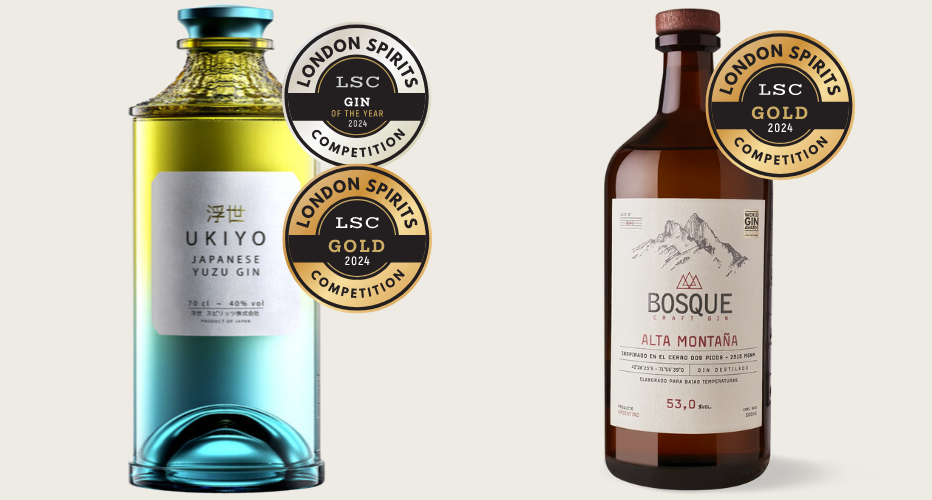
Image: (L-R) UKIYO Japanese Yuzu Gin and Bosque Gin Alta Montaña
Producers are moving beyond traditional juniper-led profiles, exploring a wide array of botanicals that offer new and complex flavor combinations. These innovations allow distillers to cater to diverse consumer palates and differentiate their products in a crowded market.
Gin Foglia from Italy (95 points) incorporates Mediterranean botanicals, offering a fresh and aromatic gin that reflects Italy’s rich culinary traditions. Indeed, the distiller notes distinct flavors expressed on the palate through the use of organic juniper, Argentine mate, and Sardinian myrtle, as well as blackberry leaves, black blueberry leaves, woodruff leaves, and stevia leaves. The ingredients include leaves of mate, myrtle, woodruff, verbena, black blueberry, stevia, and blackberry. The rise of gins like this signals a trend toward region-specific ingredients that align with local gastronomy.
Mic Drop Dry Gin from Sweden (94 points) leverages foraged ingredients from Scandinavian landscapes. This gin taps into a broader movement toward using hyper-local botanicals, often wild-harvested, which adds a unique sense of place to the product.
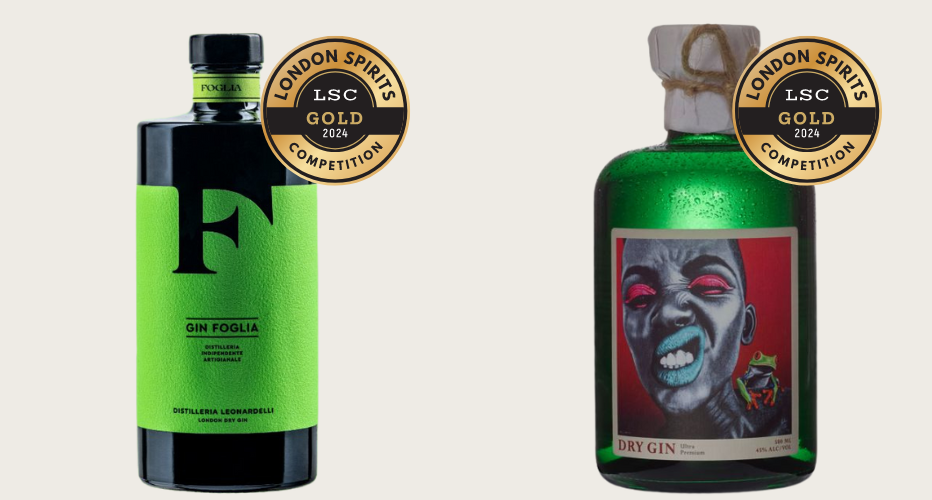
Image: (L-R) Gin Foglia and Mic Drop Dry Gin
Environmental consciousness is increasingly becoming a defining feature of the spirits industry. Many of this year’s top gins emphasize sustainable production practices, with distillers making efforts to reduce their environmental impact through local sourcing, energy efficiency, and organic farming.
Ramsbury Single Estate Gin from the UK (93 points) reflects a strong commitment to sustainability. As a single-estate gin, all the ingredients used in production—wheat, botanicals, and water—are sourced from the same estate. Ramsbury writes: “We’re farmers first: we sow, we grow, we waste nothing. Our gin is first born as winter wheat on our fields. We distill it through our 43-plate copper still, creating a delicious base spirit with a silky smooth texture. We redistill it with a careful selection of botanicals, including classing juniper, fragrant grapefruit, and our very own quince.” This trend toward single-estate production emphasizes transparency, traceability, and eco-friendliness.
Isle of Harris Gin (94 points), produced on Scotland’s remote Isle of Harris, emphasizes the importance of community-driven and environmentally conscious production methods. The distiller observes that a small copper gin still ("The Dotach") is used with local ingredients like sugar kelp seaweed, gathered sustainably by hand from local sea lochs, as our key botanical to express our island's unique maritime nature. The kelp works in harmony with seven other carefully chosen botanicals: Juniper, coriander seeds, cubebs, cassia bark, angelica root, bitter orange peel, and liquorice root. It demonstrates the growing consumer demand for spirits that reflect environmental stewardship.
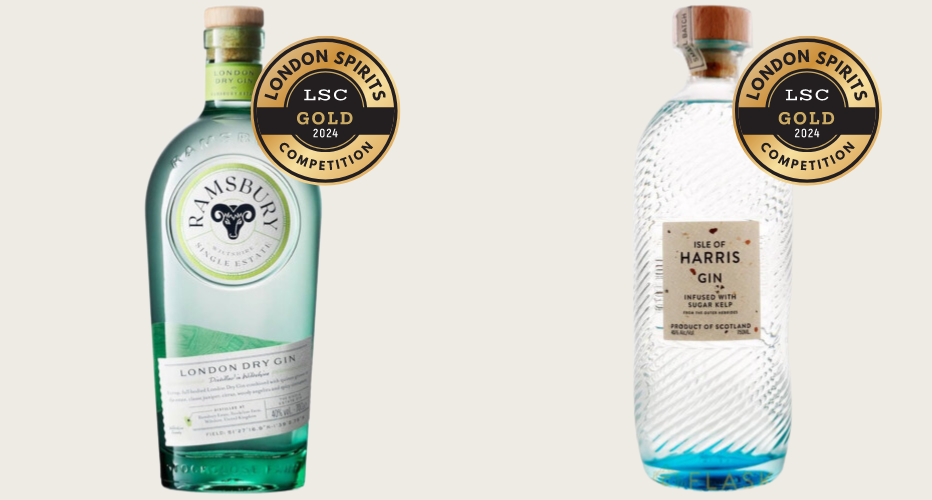
Image: (L-R) Ramsbury Single Estate Gin and Isle of Harris Gin
Gin producers are increasingly experimenting with barrel aging, a technique traditionally associated with whiskey and rum. By maturing gin in oak casks, distillers add complexity, depth, and a richer mouthfeel, appealing to consumers who enjoy both gin and brown spirits.
La Bay Oak Barrel Aged Gin from the U.S. (94 points) exemplifies this trend. Barrel-aged gins typically take on vanilla, spice, and caramel notes from the wood, providing a bridge for whiskey lovers who seek the botanical complexity of gin with the texture of a spirit aged in oak. The judges said it offers pronounced herbaceous notes and a long, balanced finish. “With hints of leather, tobacco, caramel, and dark chocolate, it delivers a complex palate with bold flavors and a satisfying finish.”
Poltergeist Unfiltered from Australia (92 points) also taps into this trend. While it is not barrel-aged, its unfiltered nature suggests a focus on texture and mouthfeel, showing how producers are innovating with production techniques to appeal to a wider range of palates. The judges wrote: “This London dry-style gin offers hints of grapefruit on the nose, leading to a rich palate with a long, perfumed finish. Fresh spice notes contribute to its smooth and delicate character.”
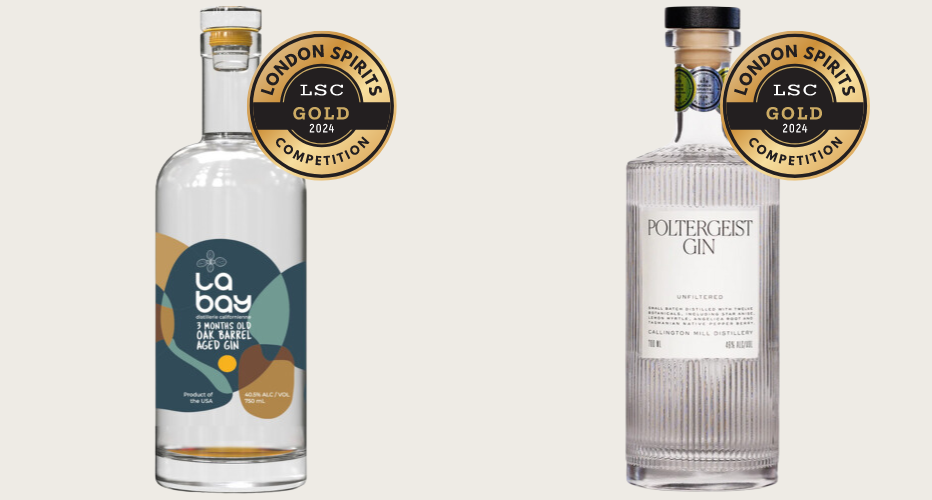
Image: (L-R) La Bay Oak Barrel Aged Gin and Poltergeist Unfiltered
While many producers are crafting lighter, more aromatic gins, Navy Strength gins—characterized by their higher alcohol content (typically 57% ABV or above)—continue to capture the interest of serious gin enthusiasts. These gins offer bold, intense flavors and are ideal for robust cocktails or sipping neat.
Barbarasa Gin Navy Strength from Italy (92 points) demonstrates how distillers are continuing to produce high-proof gins that appeal to consumers looking for powerful botanical intensity. This style remains popular among bartenders for its ability to hold its own in complex cocktails.
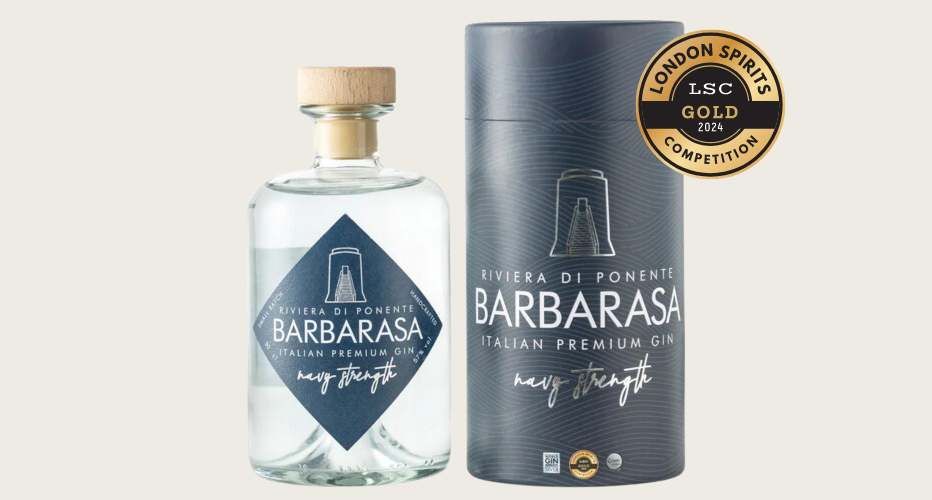
Image: Barbarasa Gin Navy Strength
Heritage gin brands, while often seen as traditional, continue to evolve by embracing new techniques and flavors. Established producers like Tanqueray have successfully adapted to modern consumer trends without losing sight of their roots.
Tanqueray No. Ten (96 points), produced by Diageo in the UK, continues to hold its place as a premium gin. Its blend of traditional juniper with fresh citrus fruits such as lime and grapefruit showcases how heritage brands can innovate while maintaining a strong sense of brand identity.
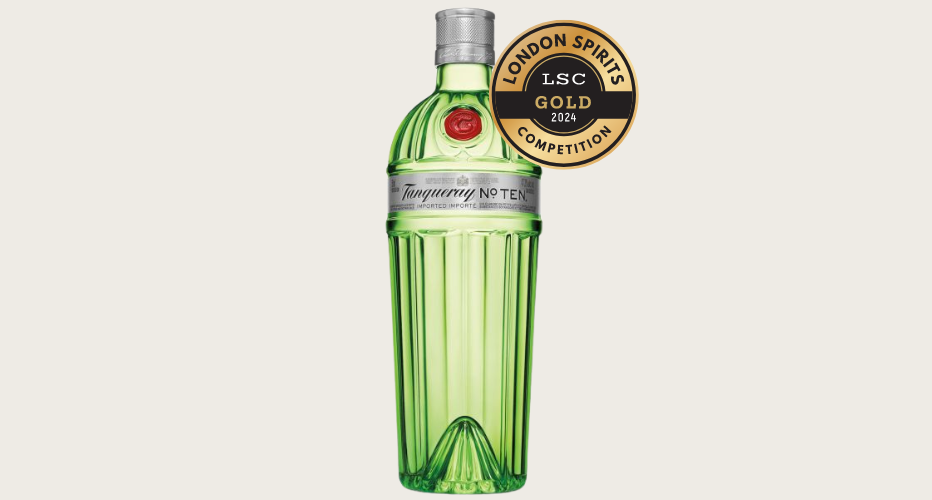
Image: Tanqueray No. Ten
The craft spirits movement shows no sign of slowing down, with many of the top gins being produced by small, independent distilleries that focus on small-batch production and artisanal methods.
Archie Rose Bone Dry Gin from Australia (95 points) is a great example of craft distillation, where distillers experiment with different botanical profiles to create distinctive, niche products. Australia, in particular, has seen a boom in craft gin production, with distillers emphasizing local flora and creative distillation techniques.
Jurassic Gin from Switzerland (95 points) taps into the country’s lesser-known gin scene. Its producers are capitalizing on the global thirst for unique craft spirits by offering something distinctive, with an emphasis on small-scale, quality-driven production.
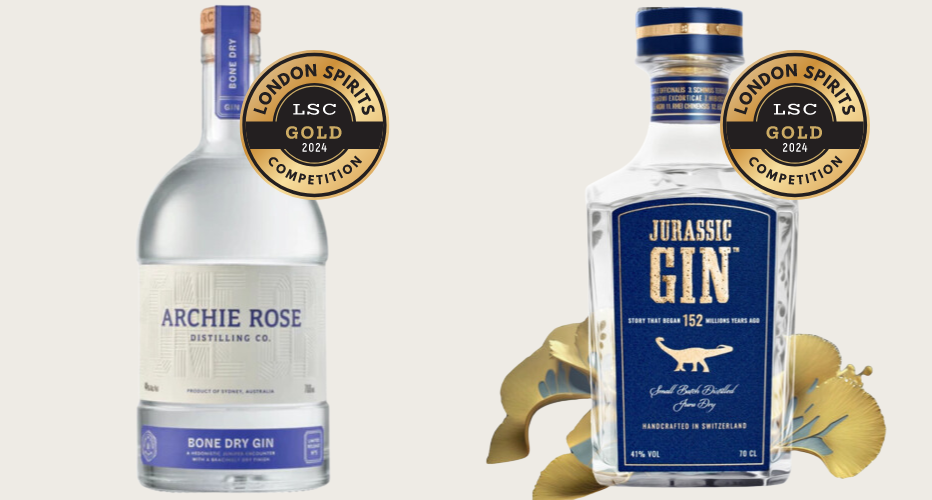
Image: (L-R) Archie Rose Bone Dry Gin and Jurassic Gin
Flavored and pink gins continue to be popular, especially in European markets where consumers often favor sweeter, fruit-driven styles. These gins, while often lighter and more approachable, offer distillers the opportunity to experiment with a range of flavor profiles.
Blue Bottle Pink Gin from Guernsey (92 points) is an example of how pink gins are evolving. While originally perceived as novelty products, these gins now offer more complexity and balance, blending fruit flavors with classic botanical notes.

Image: Blue Bottle Pink Gin
[[relatedPurchasesItems-63]]
The top gins at the 2024 London Spirits Competition showcase the depth, creativity, and regional diversity that define the gin industry today. As the category continues to grow, we can expect more innovation with local botanicals, a focus on sustainability, and a fusion of tradition with modern techniques. Distillers are pushing boundaries, whether by introducing new flavors, experimenting with aging techniques, or committing to environmentally conscious production methods. The gin landscape for 2024-25 promises to be both dynamic and diverse, offering consumers a world of options from every corner of the globe.
Header Image Source: Ramsbury Gin
Also Read:
Indian Whisky: A Rising Star in the Global Market
Unifying the Spirit: How The Gin Guild Champions Global Gin Artisans
Pioneering Change: Claudia on Leading the UK Bartenders Guild as Its First Female President
Show your spirits where it matters. Get your products tasted by top bartenders, buyers and experts at the London Competitions — enter now.